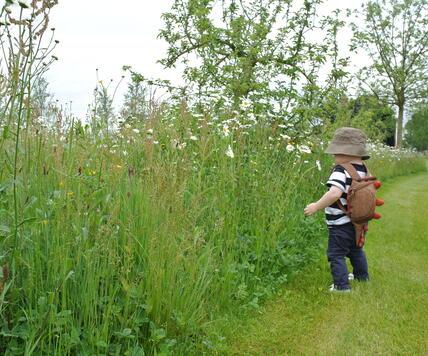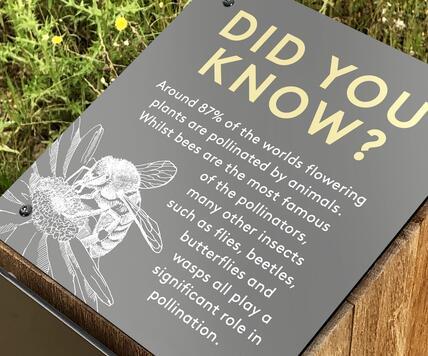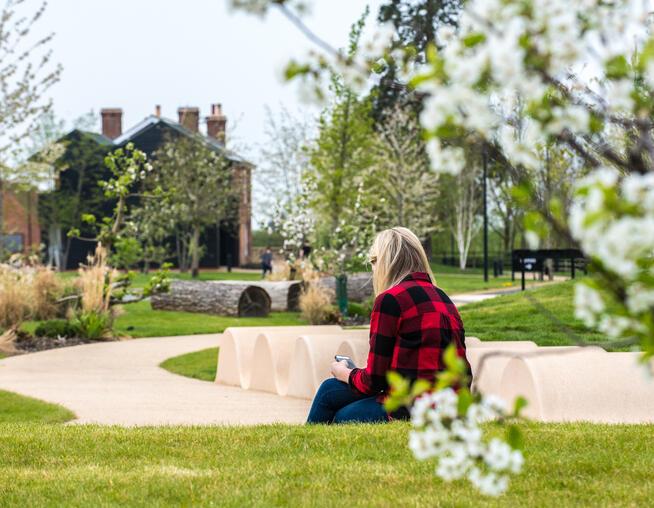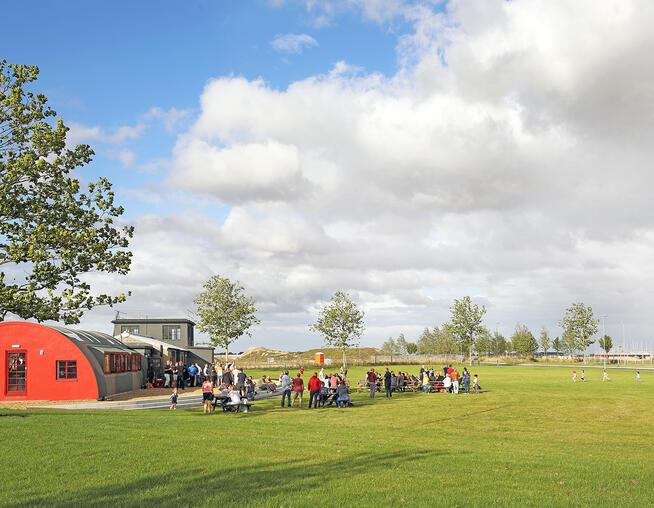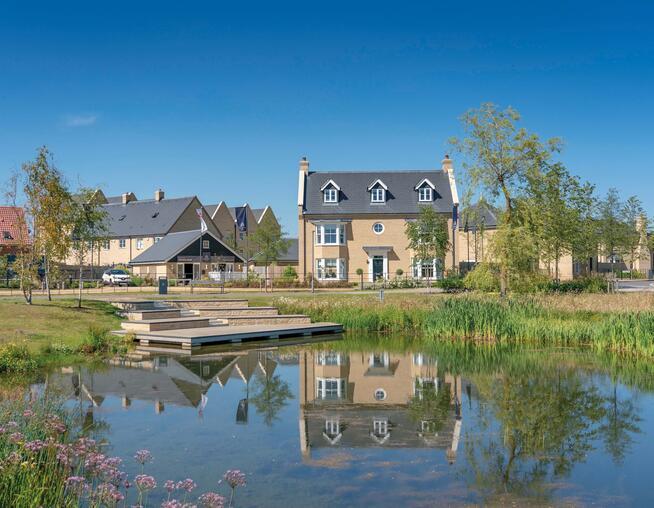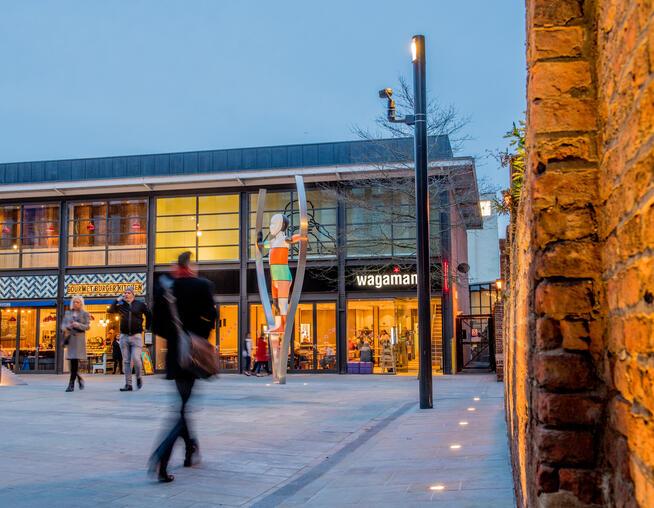CREATURE FEATURE: Beyond Bees - Making Pollinators A Priority
As Defra marks Bees' Needs Week with a coordinated pollinator awareness drive that will see London's most famous shopping street renamed 'Carnabee Street', Bradley Murphy Design's (BMD) Ecology Technical Director Helen Miller explains why the buzz around bees shouldn't distract us from other pollinators, and assesses what can be done to support these vital creatures.
Think of pollinators and, for many of us, honeybees will immediately spring to mind. Yet, according to the Wildlife Trust, honeybees are likely to be responsible for pollinating between just 5 -15% of the UK's insect-pollinated crops, leaving 85-95% relying on solitary bees, bumblebees and other wild pollinators. In fact, there are around 1,500 pollinator species in the UK, from hoverflies and wasps, to beetles and butterflies, all playing a crucial part in the lifecycles of plants around them.
Yet, they are under great threat. Three bumblebee species alone have become extinct in recent decades, with almost one in ten species of wild bee facing extinction. The recent European Red List for Bees reported that, over the past 50 years, half the bee, butterfly and moth species studied in the 2013 State of Nature Report have declined, and a global scientific review published early this year in the Biological Conservation journal reported that over 40% of insects are now endangered, threatened or in decline.
Despite this, they continue to play a crucial role in the food chain, with one third of our food being dependent upon pollination and are estimated to be worth approximately £0.6bn to the UK economy. Therefore, it is vital that planners, land owners, developers, local authorities and the general public - not to mention ourselves as landscape architects and ecologists - take key steps towards helping pollinators thrive once again, recognising responsibility and driving through change.
Under threat
So, let's start by looking at the specific threats. Firstly, pollinators must have enough trees and flowers to forage and thrive - and, quite simply, changes to how we use our land, such as intensive farming methods and use of pesticides, have caused huge losses to natural habitats. Wildlife charity Plantlife has reported that, since the Second World War, we've lost 97% of our wildflower meadows.
Paul Hetherington from invertebrate charity Buglife expanded on the reasons behind this in an inspiring talk given to the BMD team earlier this week. Green spaces are increasingly being removed and replaced with low maintenance options; from homeowners swapping lawns and flowers for tarmac and artificial alternatives, to councils looking to cost save by removing time and labour-intensive grass verges and hedges. On the flipside, some are maintained too frequently in preference of a more manicured look. Collectively this has resulted in a decline in 'insect motorways' which are the essential network pollinators rely on for travelling between habitats.
Climate change is another factor behind the declining population, with changes to the seasons and weather disrupting nesting behaviour, as well as the timing of the flowering of plants pollinators rely on.
But blame doesn't lie entirely with human behaviour. The second greatest threat to biodiversity comes from invasive species. Conservationists have warned about the arrival of the Asian hornet in the UK, a species capable of killing around 50 bees a day. Similarly, the small hive beetle poses a great threat to honeybee and bumblebee colonies if it were to arrive here.
Beekeepers are ever vigilant about protecting colonies from pests and diseases. The varroa mite is the leading biosecurity threat but fungal diseases can also affect a colony. With honeybee diseases capable of spreading to wild bumblebees, beekeepers have an important role to play in protecting their own hives and, subsequently, wild bees.
Planting the seeds for a bright future
However, it isn’t all doom and gloom. The Government's intention to mandate biodiversity net gain obliges developers to introduce more species - providing a clear incentive to create the "diverse and high-quality flower-rich habitats" Defra advocates in its National Pollinator Strategy.
This means organisations like Plantlife are more likely to see success from campaigns for local authorities and private land owners to let neatly-mown grass verges become mini-meadows where wildflowers can flourish once again. Developers are also waking up to the win-win potential of such schemes, which can save them time and money in maintenance costs, at the same time as boosting their environmental credentials and meeting government targets.
Consequently, roadside meadows are popping up across the UK, with one eight-mile 'river of flowers' recently becoming a social media sensation. Buglife plans to create and restore at least 150,000 hectares of these flower-rich "B-Lines" across the UK - getting farmers, land owners and the local authorities on board to help implement and map a series of insect pathways running across the UK, linking wildlife areas and creating a network of brand new habitats for not only bees and butterflies, but a host of other creatures too. At BMD, we're well positioned to help by incorporating pollinator-friendly planting within our landscape design strategies for clients wherever possible.
Working together with Urban&Civic, we've already created almost 20 hectares of wildflower meadow and other pollinator-friendly features across their sites at Rugby and Alconbury Weald since work began there, with lots more to come over the lifetime of both projects. As well as being great for pollinators, this type of planting helps new developments blend into their natural environment and provide attractive splashes of colour in the design.
The solutions don't stop at grass verges and wildflowers - trees are just as valuable when it comes to helping pollinators thrive. For example, Hawthorns create an ideal habitat for honeybees and lime trees and blackberry bushes will suit honeybees and bumble bees alike.
Of course, this must align with an organic approach, as all good work with planting and trees can be wiped out if they are covered in pesticides or non-organic top soil is used on a development. Minimising the use of pesticides and specifying homegrown organic soils and plants all helps to address the rise in non-native invasive species, with BMD keen to follow this as best practice and specify organic where possible.
It's also essential that urban beekeeping isn't seen to be a quick fix. By introducing hives of new honeybees, it can put extra pressure on the existing wild pollinator population through increased competition for the same amount of dwindling resources. Therefore, it's essential to provide additional foraging as well as new homes for them too. Paul at Buglife recommended Wildlife World and their natural range of bug houses and solitary bee hives which can be supplied for domestic and commercial use.
What's in it for developers?
Whilst the use of organic products and implementation of other pollinator-friendly measures inevitably come at additional cost, we encourage developers to see the potential of taking these steps for commercial, as well as environmental reasons.
As the public wakes up to the pollinator plight, customers are increasingly ready to pay a premium for developments seen as environmentally sound - and beautiful to boot. Defra and Government objectives also align with a shifting public mindset, with developers increasingly looking to meet the expectations of a more environmentally aware breed of consumer. Though common perceptions might previously have considered long grass and wildflowers as messy, aesthetic tastes are moving towards the colourful habitats favoured by bees, butterflies and other flying insects.
It's also vital to stress that protecting pollinators doesn't need to come at the expense of well-considered management plans, as savvy developers look to partner with landscape architects to help them better understand how they can adopt a more natural approach, even within more formal settings. Education can also function as a way to add structure to more relaxed landscaped areas - like BMD's "wayfinding" signage at our Rugby site, pictured below, explaining the motivation behind creating new habitats for pollinators and dispelling common myths that exist.
For BMD, a bright future for pollinators lies in recognising our role and taking responsibility, whether we are masterminding a new project or finding inspiration in our own gardens at home. Crucially, this doesn't have to mean making compromises when it comes to aesthetics, or saleability - we pride ourselves on landscapes where the needs of people and pollinators work in harmony. There's a buzz around saving the bees, and it falls to us to make the most of this, creating environments where all pollinating insects can flourish.
Date published: 12 Jul 19
